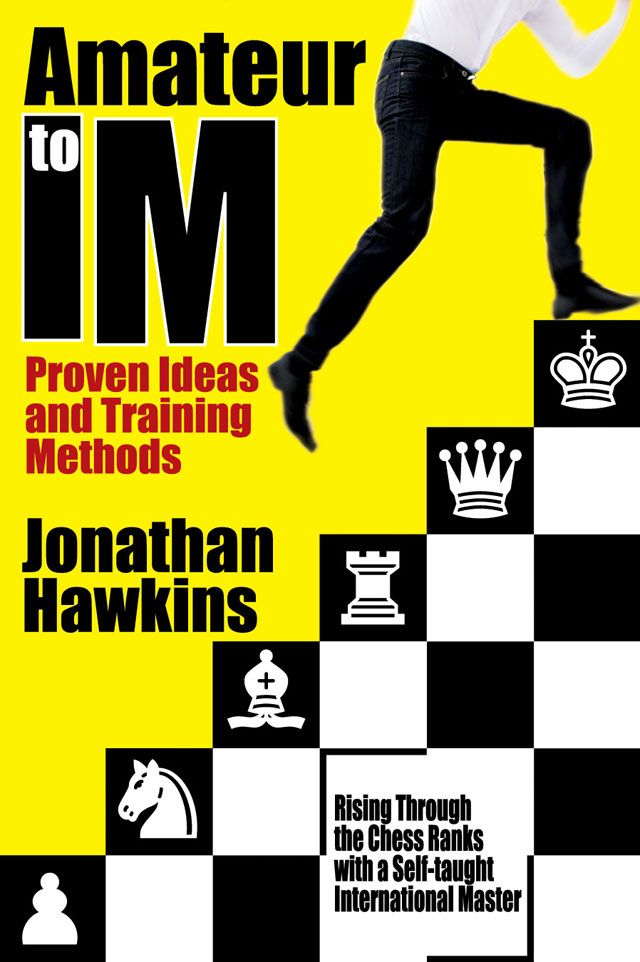“In order to improve your game, you must study the endgame before everything else, for whereas the endings can be studied and mastered by themselves, the middle game and the opening must be studied in relation to the endgame.” – José Raúl Capablanca (World Champion 1921-1927)
“For 99% of players, the endgame is the most important phase of the game.” – IM Mikhail Shereshevsky
Our BOOK OF THE WEEK is Amateur to IM: Proven Ideas and Training Methods by IM Jonathan Hawkins.
How did Jonathan Hawkins manage to go from being an average tournament competitor to a player on the brink of clinching the Grandmaster title?
The secret was knowing what to study and how to learn as efficiently as possible. Focusing his attention firmly on the endgame, Jonathan devised a number of building blocks and identified a number of very important areas of study. The result of his hard work was a meteoric rise through the ranks, as he became firmly established as a prominent GM killer on the English tournament circuit. These pages reveal the secrets of his notebooks for the first time.
IM Hawkins presents special material aimed to help you become a much better practical player, one armed with a deeper understanding of key aspects of chess. A careful study of the lessons presented in this book should enable the chess student to gain significant improvement.
Here is an excerpt from lesson 2.
LESSON AIMS
- > Recognize the basic methods by which an endgame can be won.
- > Understand how to identify the long-term goals of both sides in a given endgame.
The first question which arises in any position is a general one: “What should I be doing?”
It is, of course, nice to have a grand plan, even if its realization is distant and move-to-move matters are more reliant on smaller, shorter plans (more on this later).
Strategy (or the accumulation of strategy) is ultimately either an attack on some aspect of the enemy position or the promotion of a pawn. If we reduce this specifically to the endgame we can amend this slightly and state our two fundamental ideas as:
- > Promoting our pawns.
- > Attacking the enemy structure.
In an endgame, the material will often be too reduced to mount a successful attack on the king, so in most cases when we discuss objects of attack we are talking about pawns and pawn structures.
We should also keep in mind the defensive corollaries of this:
> Improving our own structure.
> Blockading passed pawns.
We will now examine five positions and decide which of these ideas (or both —greed is always good in chess!) is appropriate for each. Some of the positions also occur elsewhere in the book.
My aim is not to do a rigorous analysis of games or positions (although some of the positions will be subjected to this in later chapters), but rather to draw some logical conclusions and make verbose assessments.
Let us begin!
Why choose the Forward Chess edition? It is cheaper than the physical version and the variations are more efficient to play through on a digital board.
Learn More: Amateur to IM: Proven Ideas and Training Methods
“I like Jonathan Hawkins’s “Amateur to IM” for beginning/intermediate players.” – IM John Bartholomew
“One of the best I’ve read. I recommend it. A few eye-openers in it for me and that’s rare!” – FM Ingvar Thor Johannesson
- Dark Mode is now live on Web Reader - April 30, 2024
- Book Review: Tal Botvinnik 1960 - April 24, 2024
- Grandmaster Mistakes – Chess Psychology - October 27, 2021

